Values of old bungalows in PJ hold steady
Petaling Jaya, or simply PJ to the locals, has come a long way since its days as a satellite town back in 1952. Today, the city boasts numerous residential areas, commercial centres and amenities.
PJ is highly accessible as a number of highways, such as the Federal Highway, the Damansara-Puchong Expressway and the Sprint Highway, cut across it. This accessibility has seen property values there rise steadily.
As property prices rise across Petaling Jaya, old bungalows in the older parts of PJ, such as Sections 1 to 16, attract buyers for both commercial as well as residential purposes.
Bungalows on main roads
Real estate agent and property consultant Nixon Paul, director of Carey Real Estate Sdn Bhd, grew up in PJ after moving there in 1970. “PJ was very residential in those days, but today it is more commercial in nature,” he says. “All the houses in PJ Old Town [Sections 1 to 4] along the main road, for example, as well as those along Jalan Kemajuan, Jalan Gasing and Jalan Universiti, all have commercial value. They fetch a totally different price compared with the other units.
“It is hard to say what the values of the homes on the main roads are because certain transactions take place even when valuers are not willing to put a price on them; those who are interested just go ahead and purchase them. For example, in Jalan Kemajuan, a house along the main road was valued at about RM230 psf, but the transaction was done at RM400 psf.
“If the purchaser has a specific need — for example, to use the bungalow for a showroom — they will pay more for it. So there is no standard figure as prices depend on the location and what the property is used for.”
Knight Frank Malaysia executive director Keith Ooi says, “Usually any property facing the main road will eventually turn into a commercial property, provided the planning authorities allow it.”
Rents for some of these commercial outlets can range between RM10,000 and RM15,000, or from RM3 psf, he conservatively estimates. “However, the rental rates depend on the renovation done, the location and positioning of the actual lot,” says Ooi.
While there is new life for the old bungalows in PJ if they are converted for commercial use, the majority of them continue to be used as residences.
 According to Usha Gopalan of Zerin Properties’ Private Wealth-Real Estate division, there is healthy demand for old bungalows in PJ. “There is demand because of PJ’s location, maturity with ample amenities, and easy access to highways, such as the Federal Highway and New Pantai Expressway. PJ is also low density, which attracts many investors and occupiers who prefer landed properties.”
According to Usha Gopalan of Zerin Properties’ Private Wealth-Real Estate division, there is healthy demand for old bungalows in PJ. “There is demand because of PJ’s location, maturity with ample amenities, and easy access to highways, such as the Federal Highway and New Pantai Expressway. PJ is also low density, which attracts many investors and occupiers who prefer landed properties.”
Data collected by Zerin Properties between 2003 and 2010 on the sale of bungalows in PJ Old Town showed that 503 were sold in 2003. In 2008, there were 959 transactions before demand dropped the following year to 923, mostly due to the economic slowdown. In 2010, there were 946 transactions (see chart).
“Demand also increased recently when the Selangor government allowed the renewal of leases up to 99 years at very affordable rates and payment terms,” Usha says.
The scheme Usha refers to is called “Private Residential Ownership”, which was implemented last year to allow landowners of residential properties to have the option of renewing land leases at a nominal sum of RM1,000 instead of a high premium based on the current market rate. The caveat, though, is that the owners have to remain on the property. If the owner sells the property, he would have to pay the full premium.
Property values
The property values of the old bungalows in PJ have held steady over the years, thanks to the good amenities and infrastructure as well as PJ’s city status. CB Richard Ellis Malaysia associate director Wong Tack Loong says, “The average selling price for the old bungalows are between RM1 million and RM3 million, depending on the size of the land area, terrain, type — such as 1, 2 or 2½-storeys — tenure and condition of the building.”
He estimates that the annual appreciation rate for the older bungalows has been between 5% and 15%. “Some of the buildings are pretty old — over 30 years old — and most of the owners will either have to conduct extensive refurbishment or demolish the existing structure and build a new one,” says Wong.
 Kim Realty CEO Vincent Ng Eng Sim says, “The price depends on how many more years are left on the lease. For example, bungalows along Jalan Gasing, which have another 60 years to go, and because they have commercial value, are going for about RM300 to RM350 psf, depending on the size. But the average Section 5 house is going for RM200 psf.”
Kim Realty CEO Vincent Ng Eng Sim says, “The price depends on how many more years are left on the lease. For example, bungalows along Jalan Gasing, which have another 60 years to go, and because they have commercial value, are going for about RM300 to RM350 psf, depending on the size. But the average Section 5 house is going for RM200 psf.”
Ng explains that the average land area of the bungalows differs from one section of PJ to another. For instance, in Sections 1 to 4, it is from 4,000 to 5,000 sq ft. However, in Section 5, 11, 12 and 14, it can be about 6,000 to 8,000 sq ft.
“The properties that are high in demand are in areas such as Section 5, 6, 11, 12 and 14 because of their location and proximity to the Federal Highway. They are a short distance from Bangsar, but price are still cheaper than in Bangsar or Damansara Heights,” says Ng.
Besides their location, Ng says homebuyers are interested in the old bungalows because of the substantial land size, which allows them to tear down the existing structure to build a bigger home. “People also buy these properties because the older parts of PJ are not so ‘crowded’, and they are spread out nicely with more greenery,” he adds.
According to Ng, some people buy the property because it is close to that of their relatives, such as those with young children who want the grandparents to babysit for them. Friends and sentimental reasons as well as familiarity with the neighbourhood are among the reasons people buy these old bungalows, says Ng.
Zerin Properties’ Usha says old bungalows in PJ are priced at about RM250 psf for an average land size of 6,000 sq ft. But it depends on the condition and built-up of the houses. She adds that properties in Section 3 and 4 fetch higher values because they are further away from the Old Town wet market.
 “The commercial area in PJ Old Town near the wet market is also busy and congested during office hours, so people generally stay away from these areas if possible,” she explains. According to Usha, the average annual appreciation rate for properties in Sections 3 and 4 over the past few years has been about 8% to 10%.
“The commercial area in PJ Old Town near the wet market is also busy and congested during office hours, so people generally stay away from these areas if possible,” she explains. According to Usha, the average annual appreciation rate for properties in Sections 3 and 4 over the past few years has been about 8% to 10%.
For the other areas of PJ with old bungalows, Usha says Section 5, 6, 9, 11 and 12 get active enquiries from buyers. Prices of homes in areas such as Section 6, which are part-commercial and part-residential, vary greatly because of the commercial potential, she adds. The appreciation rate in these areas is about 10% per year, depending on the location and condition of the house.
Usha says asking prices for older houses that are in good condition, and with a land area of 6,000 sq ft, start from RM1.5 million. If the house has been renovated or refurbished, the price goes up.
Some of the enquiries, Usha reveals, are for dilapidated bungalows. These people wish to tear down the existing building, put up a new building then sell it on the secondary market for a profit, she says. “They can sell the property for about RM1.8 million to RM2.2 million for a land area of 6,000 sq ft, depending on the location.”
Carey Realty’s Nixon says, “Generally, values are about RM200 to RM250 psf for bungalows with land sizes of 6,000 to 20,000 sq ft.” However, he admits that it is hard to generalise the values and a focused approach is required when scouting for bungalows.
“Houses in Section 5 are the most sought after, simply because there are only bungalows there,” Nixon says. “And it is also near the green belt of Gasing Hill. Prices in Section 5, compared with Section 11 and 12, are about RM30 to RM50 higher psf.” Moreover, Section 5 homes are on freehold land, compared with those in PJ Old Town which are leasehold.
Nixon says the houses in Section 5 are used mainly for residential purposes, with many foreigners buying land there because of the “green” environment and freehold tenure. Bungalows here have land sizes of 5,000 to 20,000 sq ft. “I think they will have the same values such as those in Kenny Hills as the area is very green, very residential. And generally, the people here are more affluent,” he adds. Kenny Hills is considered by many as the Beverly Hills of Kuala Lumpur.
“Today, it is quite difficult to buy anything under RM2 million, which is generally the asking price depending on the land size and condition of the house,” Nixon says. “Some people have torn down the old premises and rebuilt the house; this has bearing on the price. But for old houses, usually the land has a higher value than the house.
“However, to put things in perspective, some houses in Section 5 tend to have lower values due to the access, namely the narrow roads, because in the 1950s, people did not have cars or had just one car,” says Nixon, adding that there are few transactions for these bungalows as there are few sellers.
According to Nixon, the areas that have seen active transactions for old bungalows are in Section 11, 12 and 14, where prices range between RM150 and RM220 psf.
Nixon also agrees that most people buy the old bungalows in PJ because of the accessibility and generational element.
“Family members live in the area, so people want to stay close to family and also buy into the area.” Also, there are those who buy the property because they wish to tear down the existing home to build a larger home for themselves.
As for the average appreciation rates of these bungalows, Nixon says before 2007, growth was slow and steady at about 5% to 10% at most. However, things got out of hand between 2009 and 2011.
“Things went haywire when in some parts of PJ, properties on the secondary market doubled in value. Because of this, Bank Negara Malaysia stepped in to curb the situation.” As a result of these measures, the appreciation rate for the bungalows has stabilised and remained flat since, he opines.
Nevertheless, investors and homeowners continue to find these bungalows appealing, thanks to the city’s liveability and short supply of old bungalows with substantial land areas. This means their values are likely to hold strong in the future.
This article appeared in City & Country, the property pullout of The Edge Malaysia, Issue 927, Sep 10-16, 2012
TOP PICKS BY EDGEPROP

Taman Bukit Indah @ Iskandar Puteri
Johor Bahru, Johor

Taman Nusa Sentral
Iskandar Puteri (Nusajaya), Johor
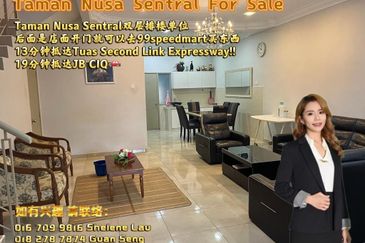
Taman Nusa Sentral
Iskandar Puteri (Nusajaya), Johor

Aira Residence
Damansara Heights, Kuala Lumpur

Residensi Bintang Shamelin ( Shamelin Star )
Cheras, Kuala Lumpur




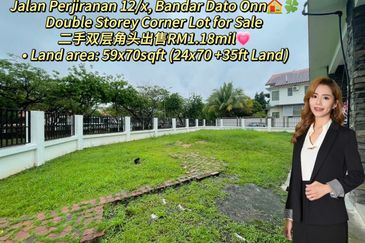
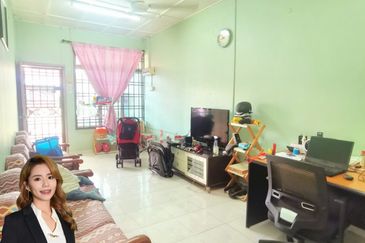
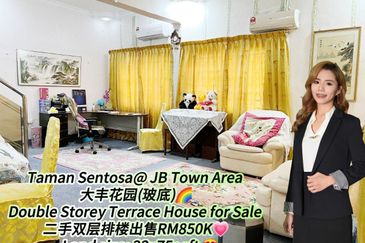

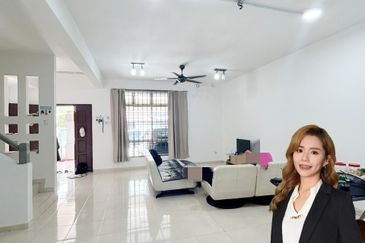
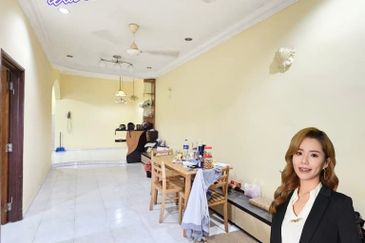
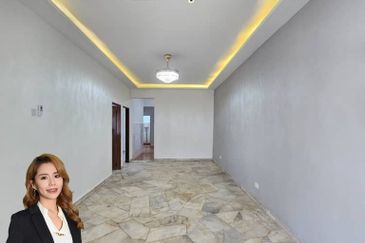

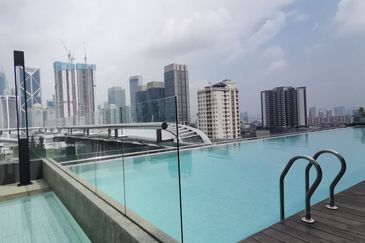


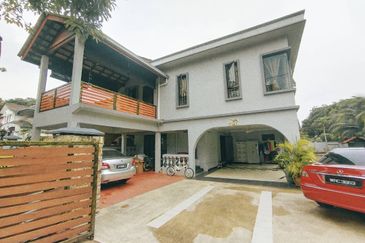
hero.jpg?GPem8xdIFjEDnmfAHjnS.4wbzvW8BrWw)



